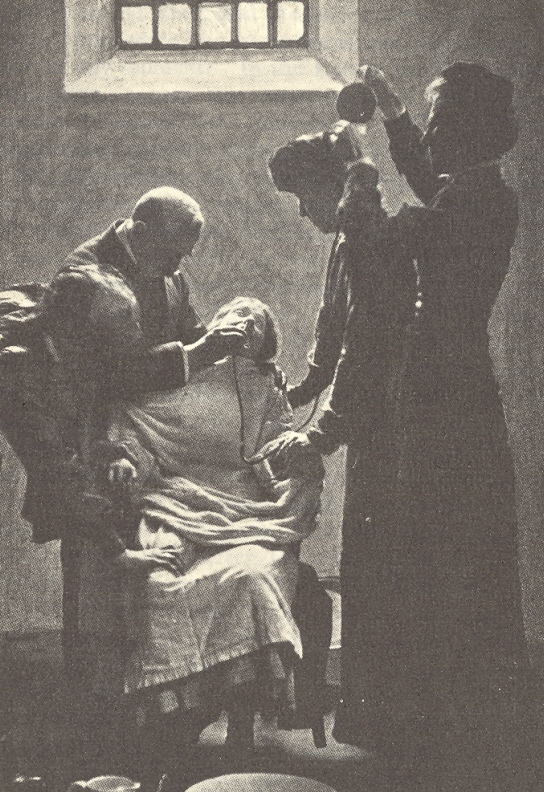Prison and Suffragettes
As a result of their militant protests, the Suffragettes and prison went hand in hand. Mary Leigh, a Suffragette known for her violent protests, received a number of prison sentences for her militancy. Her offences included breaking the windows and throwing a hatchet a politician who she believed was the Prime Minister.
Life in prison was tough - many of the Suffragettes used hunger strikes to continue their protests, resulting in painful force-feeding.
The suffragette Mary Leigh was imprisoned more than almost every other suffragette. She described the horrors of her experience: “While I was held down a nasal tube was inserted. It was two yards long, with a funnel at the end; there was a glass junction in the middle to see if the liquid was passing. The end was put up left and right nostrils on alternate days.”

She, along with many other activists, continued their protests in prison by refusing food. It was felt that if they died from starvation in prison, they would be seen as martyrs - thus advancing the cause. However, their action caused outrage among the public, who were both shocked by their behaviour, but also horrified by the idea of force-feeding.
In response, the Government brought in the Prisoners, Temporary Discharge for Health Act in 1913. Also known as the Cat and Mouse Act, the legislation meant that women who went on hunger strike would be released when they were too weak to cause any trouble. Once they had recovered at home, they would be re-arrested. The idea was that no woman would die in prison, therefore shifting the blame for any deaths away from the government.
MLA Citation/Reference
"Prison and Suffragettes". HistoryLearning.com. 2024. Web.
